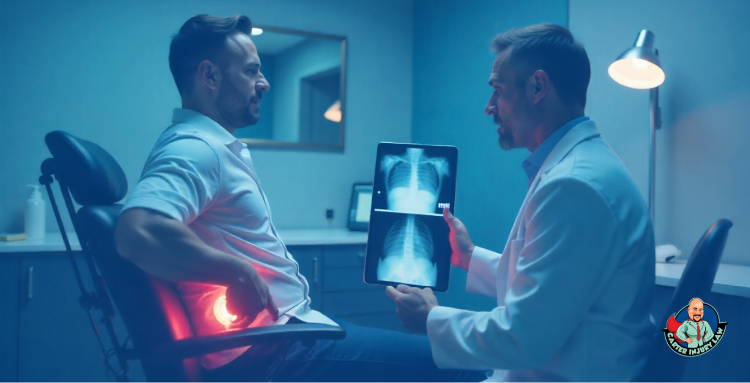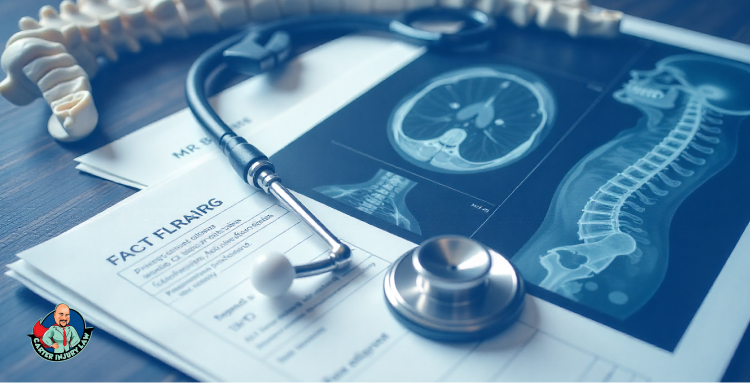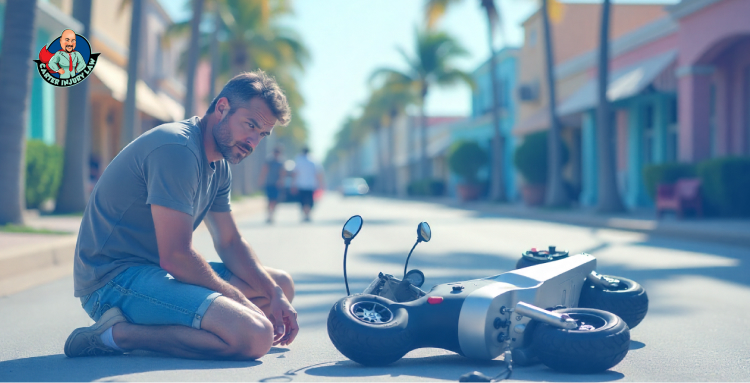
blog
July 30, 2025
Medical treatment Phase after a car accident in Florida

After the chaos of a car accident, a strange silence settles in. The adrenaline fades. The tow truck leaves. And then you find yourself in a waiting room with fluorescent lights and unfamiliar forms, unsure whether your pain is just a bruise or the beginning of something bigger. The insurance company knows what they’re doing. Do you?
This part or this phase won’t be loud. However, it might be the most important stretch of your entire case. And the truth is, most people get it wrong.
Let’s make sure you don’t.
1) What Is the Medical Treatment Phase of a Personal Injury Case
At this point, your case is about your body, your recovery, and what the doctors are seeing. We’ve already cleared the investigation. Now, your focus is getting the medical care you need so we can understand the full picture.
This phase is where your injuries are tracked in two ways:
Subjectively — what you tell your doctor hurts. Where the pain is. How it’s affecting your sleep, work, and daily life.
Objectively — what the medical imaging actually shows. MRIs, X-rays, and CT scans are the evidence we use to prove what’s really going on beneath the surface.
Eventually, your treating physician may determine you’ve reached something called Maximum Medical Improvement, or MMI. It means the doctor believes your condition has stabilized. It’s a medical milestone, and it helps us know when to start building the case for settlement.
The American Medical Association recommends a 6-month care period before a doctor can issue a permanent injury rating. Once you hit that point, we’ll be ready to move your case forward with facts.
2) Don’t Skip the Imaging, It’s the Backbone of Your Case

If your doctor recommends imaging, go. Don’t wait on it; don’t shrug it off. MRIs, X-rays, and CT scans are not just tools for diagnosis; they’re tools for proof.
Telling us you’re in pain matters. But the reality is, the insurance company isn’t going to just take your word for it. They want to see what’s showing up on film. Imaging gives us objective evidence that backs up everything you’ve been saying to your doctors and that’s what helps us build a stronger case.
Disc herniations, ligament damage, and nerve compression aren’t things you can always feel on the surface, but they show up clear as day with the right scans.
A study in The Spine Journal found that disc herniations are frequently missed without advanced imaging like MRIs, making them critical in identifying injuries accurately. So if you haven’t had those tests yet, let us know. We’ll help you get them scheduled.
3) Which Doctors You See Tells the Insurance Company Everything
Insurance companies look at medical care in levels. The more specialized and serious the treatment, the more seriously they’ll take your injuries. Here’s how it breaks down:
Conservative care: This includes physical therapy or chiropractic treatment. It’s where most people start.
Intermediate care: Pain management specialists step in here like injections, trigger point therapy, and ablations.
Invasive care: This is the surgical level — whether it’s spine surgery or an operation on your shoulder, knee, or other extremity.
Now, we’re not saying you need surgery to have a strong case. But seeing the right kind of doctor helps us understand how severe the injury is and what kind of recovery you’re facing.
4) How Long Does Treatment Last? Longer Than You Think

One of the most common questions we get is, “How long will this take?” And the honest answer is, it depends on your body. But generally speaking, this part of your case doesn’t wrap up in a few weeks.
Most clients are under a doctor’s care for 6 to 8 months after the injury. That’s not because we’re stalling. That’s because the medical guidelines require time to track how you’re recovering, and whether your injuries will have long-term effects.
Before we can even begin talking about settlement, we need that full picture. We don’t rush to settle cases. We settle them when the timing is right. When we’ve got the facts, the records, and a full understanding of what you’re really dealing with.
5) We’re Still Working Behind the Scenes While You Heal
Just because you’re focused on treatment doesn’t mean your case is on hold. We’re still moving. Every week, we’re checking in with your doctors, collecting records, updating the insurance companies, and keeping tabs on your medical bills.
We’re setting the stage for what comes next — the demand phase. That’s when we officially present your case for settlement. And by the time we get there, we want to have every record, every bill, and every recommendation lined up and ready to go.
However, we can’t create evidence that doesn’t exist. You’ve got to do your part: go to your appointments, follow through with treatment, and keep us in the loop if something changes. The insurance company is watching for consistency. So are we. Let’s watch what this phase means with a bit more clarity.
6) What You Do Now Affects What You Can Recover Later
This part is pretty simple, if you're hurt, get treated. And if you’re already treating, stick with it.
We know life gets in the way. Work, family, schedules — it’s easy to push off an appointment or skip a follow-up. But every gap in care becomes a talking point for the insurance company. They’ll use it to argue you weren’t really hurt… or that you got better and just didn’t tell anyone.
And your case is only as strong as your medical records. Not what you feel, not what you say, only what’s documented. So don’t leave room for doubt. Go to your appointments. Follow the treatment plan. And give us the best version of your case to fight for.
7) One Shot, One Settlement, No Do-Overs

When your case settles, it’s over. There’s no tab left open. No asking for more money later if things get worse. That’s not how personal injury claims work.
And we’ve seen it happen — people rush into a settlement before they understand the full extent of their injuries. Then 6 months down the line, they’re told they need surgery. Or they’re still in pain. But the case is closed, and there’s nothing more we can do at that point.
That’s why this phase matters so much. Now is the time to get answers. See the specialists. Get the imaging. Understand what’s ahead, not just what hurts today.
8) Social Media and Surveillance — Just Don’t Do It
We get it — you want to update your friends, post vacation photos, or show you’re “doing fine.” But if you’re in the middle of a personal injury case, the best advice we can give you is simple: don’t post anything.
Insurance companies do check. They have entire departments that monitor social media. And they’re not looking for the whole story — just one picture, one video, one post they can twist to say you’re not really hurt.
It might seem harmless at the time. But later, that one moment could end up in front of a jury. You’re better off healing in silence than posting for sympathy. Let your medical records do the talking — not your timeline.
9) We’re Ready When You Are
There’s no perfect moment to ask for help. But there’s value in knowing you're not expected to walk this alone. The medical phase is quiet, often slow, and full of questions most people don’t know they’re supposed to ask.
You don’t need to have everything figured out. You just need someone who’s done this before and still cares every time like it’s the first. Call us at 813-922-0228 or visit CarterInjuryLaw.com. We'll guide; you make the choice.
Recent posts











